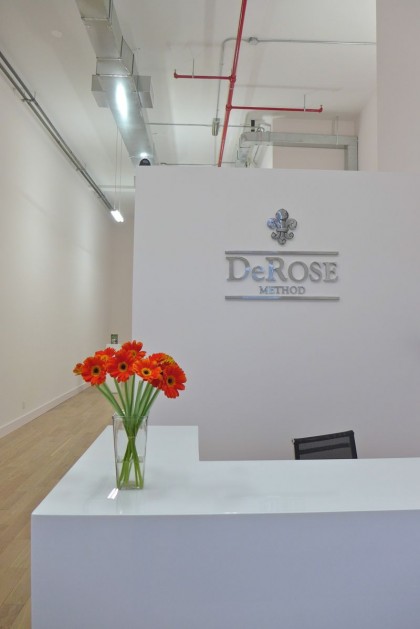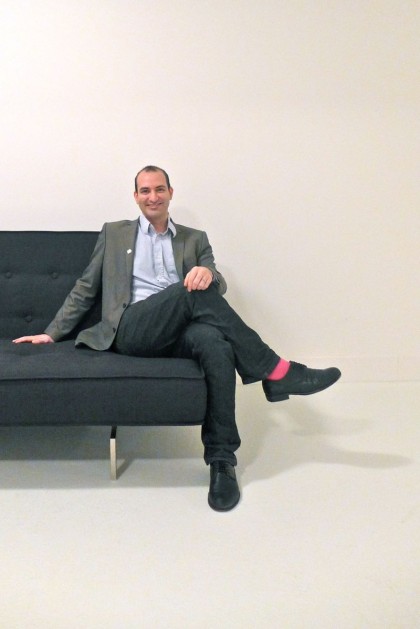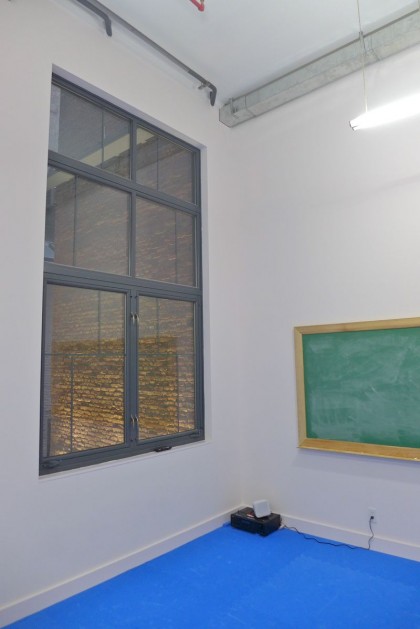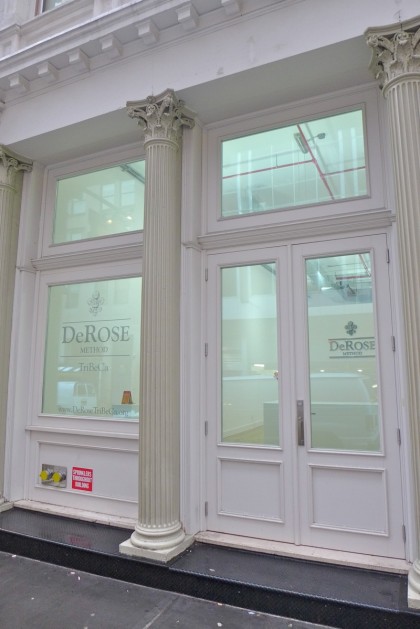New Kid on the Block: DeRose Method Tribeca
 “We teach our students how to achieve performance in their lives,” said Fabio Martins, owner of the new DeRose Method Tribeca studio on Murray.
“We teach our students how to achieve performance in their lives,” said Fabio Martins, owner of the new DeRose Method Tribeca studio on Murray.
 “So you come here if you have things you want to fix,” I said.
“So you come here if you have things you want to fix,” I said.
“That’s perhaps a bit negative,” said Martins, who goes by Fabs, who is charming, and who lives in Tribeca. (When he told his wife they’d be moving from London to New York City, he realized it might be prudent to let her choose the neighborhood.) “You come here because you think, I can do better.”
He suggested I read the “DeRose Method Quality of Life” booklet that the studio hands out, and sure enough, there’s a paragraph near the start that lays the philosophy out, more or less:
The DeRose Method is a proposal emphasizing quality of life, good manners, good human relations, good nutrition, fitness, and culture. Some of the tools we use are respiratory re-education, stress management, organic body techniques that improve muscle tone and flexibility, and procedures that enhance emotional relaxation and mental concentration. All of this, ultimately, aims to expand consciousness and self-awareness.
The method was founded in Brazil in 1960 by Professor DeRose, who was 16 at the time, and it has evolved over the decades. “For many years we thought we taught one thing,” said Fabs. “But the public perceptions of that thing—yoga—are currently different from what DeRose Method does.”
 The new facility on Murray is 3,200 square feet total. At street level, you’ll find a reception desk, an area for socializing, and a practice room, facing the courtyard (and Rosie Pope’s offices across the way), with lusciously high ceilings; downstairs are changing rooms for men and women, another area for socializing (for smaller groups), and another practice room. They’re waiting on some furniture, but my sense is that even when the space is done it’ll be relatively spare.
The new facility on Murray is 3,200 square feet total. At street level, you’ll find a reception desk, an area for socializing, and a practice room, facing the courtyard (and Rosie Pope’s offices across the way), with lusciously high ceilings; downstairs are changing rooms for men and women, another area for socializing (for smaller groups), and another practice room. They’re waiting on some furniture, but my sense is that even when the space is done it’ll be relatively spare.
The “technical classes” have two levels. The introductory one is about the ability to concentrate and assimilate, your physical condition, and to help you to breathe. (“You need to get enough oxygen to your brain, which most people don’t do,” said Martins). The second level is swásthya, but once we made sure I was spelling it correctly, we didn’t get around to defining it.
“I have to admit I find it all a little vague,” I said as politely as I could.
“We prefer to err on the side of vagueness,” replied Martins. The concepts are broad, he explained, until you bring the real world into them, until you apply them to life—and then they come alive.
 “Let me give you an example,” he said. “There are three keys to performance: 1) Your ability to concentrate. 2) Self-confidence. 3) Your machinery: your body, your brain, your emotions. We have a practitioner who had been training to be an Olympic-level speed skater, and when he was injured, he decided that he was going to be a race-car driver. He races virtual race cars, and the top 50 drivers get to participate in a championship race. There used to be only two drivers who won that championship race; now there are three.”
“Let me give you an example,” he said. “There are three keys to performance: 1) Your ability to concentrate. 2) Self-confidence. 3) Your machinery: your body, your brain, your emotions. We have a practitioner who had been training to be an Olympic-level speed skater, and when he was injured, he decided that he was going to be a race-car driver. He races virtual race cars, and the top 50 drivers get to participate in a championship race. There used to be only two drivers who won that championship race; now there are three.”
The hour-long technical classes are for no more than 10 people at a time, and teachers must pass an annual exam (four hours’ written test and a two-hour practical exam, such as teaching a class). There are different memberships available; the basic one includes one technical class per week, access to Professor DeRose’s weekly online talk (and its translation into English), and social occasions, so practitioners can experience the DeRose concepts by example. Private sessions are also available.
DeRose Method Tribeca is at 55 Murray (between W. Broadway and Church), 646-535-5057; derosetribeca.org, Facebook.com/DeRoseMTribeca.
Recent New Kid on the Block/First Impressions articles:
• The Dead Rabbit
• Fika
• The Lounge at Atera
• American Flatbread Tribeca Hearth
• Shigure
• Drybar
• Rosie Pope
• Bikini Bar
• Benares
• The Cricketers Arms
• Tribeca Canvas












